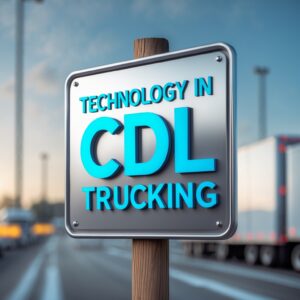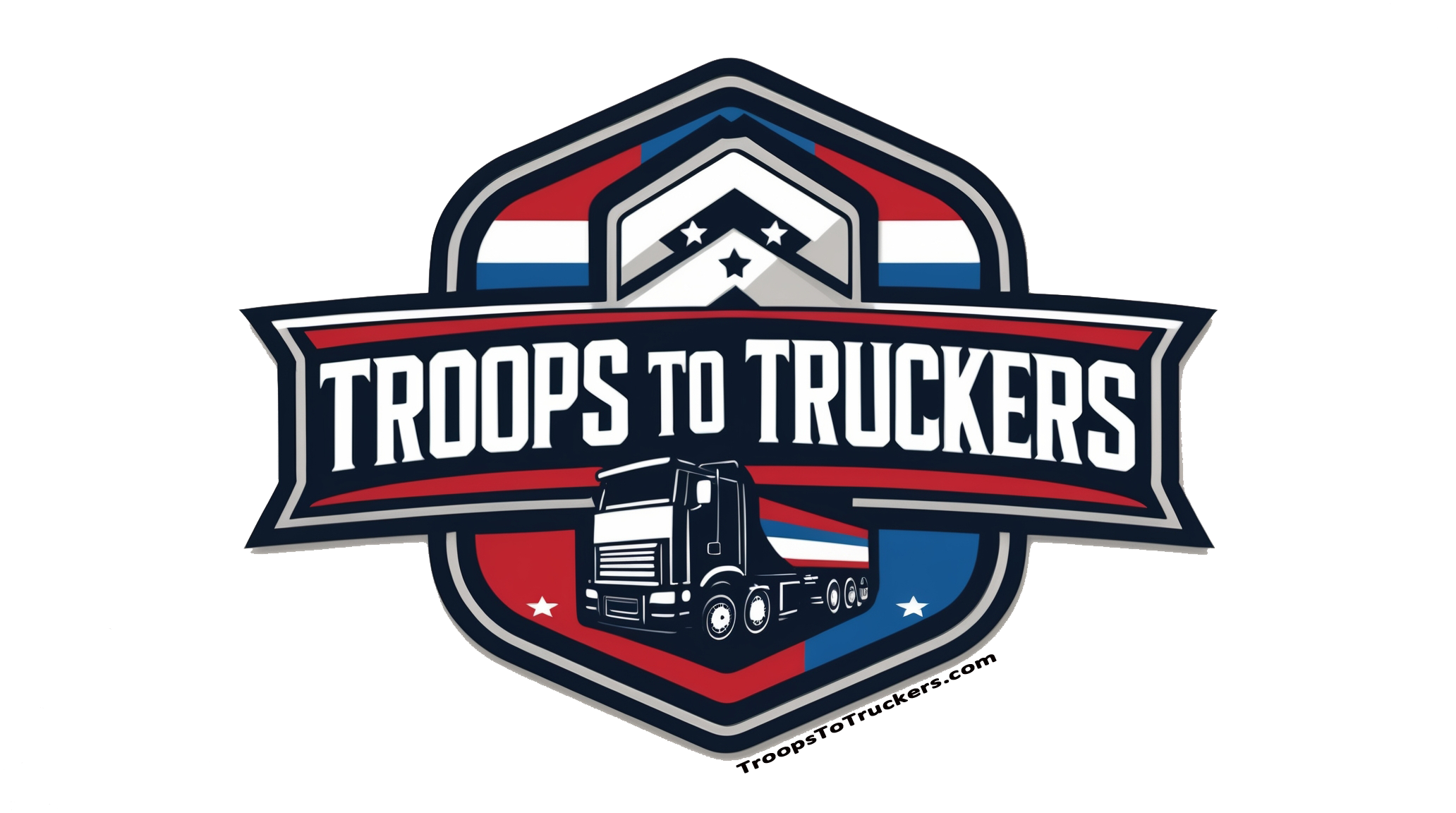 In today’s world, technology is rapidly transforming every industry, and trucking is no exception. The transportation and logistics sector has seen significant advancements in recent years, and technology is now at the heart of efficient, safe, and compliant operations. From GPS and route optimization to Electronic Logging Devices (ELDs) and safety monitoring systems, technology is redefining the role of the commercial truck driver and enhancing the industry as a whole.
In today’s world, technology is rapidly transforming every industry, and trucking is no exception. The transportation and logistics sector has seen significant advancements in recent years, and technology is now at the heart of efficient, safe, and compliant operations. From GPS and route optimization to Electronic Logging Devices (ELDs) and safety monitoring systems, technology is redefining the role of the commercial truck driver and enhancing the industry as a whole.
This chapter explores the essential technologies impacting trucking, how they benefit drivers and companies, and why embracing these innovations is crucial for anyone looking to succeed in the modern trucking industry.
How Technology is Transforming the Trucking Industry
GPS and Route Optimization
Global Positioning System (GPS) technology has revolutionized how truck drivers navigate the country’s vast highways and byways. Gone are the days of relying solely on printed maps or handwritten directions. With GPS, drivers have real-time access to turn-by-turn navigation that helps them reach their destinations more efficiently.
GPS systems reduce the likelihood of getting lost, which saves time and fuel—two critical resources in the trucking business. Furthermore, GPS technology enables route optimization, which identifies the best possible routes to avoid traffic congestion, construction zones, and other obstacles that could cause delays.
In addition to saving time, GPS and route optimization technology improve fuel efficiency, which directly impacts the bottom line. For trucking companies, even a small improvement in fuel efficiency across an entire fleet can result in significant cost savings.
For drivers, this means more time on the road and potentially higher earnings due to reduced idle time and fewer delays. Embracing GPS and route optimization tools is a smart choice for drivers and companies looking to maximize their resources.
Electronic Logging Devices (ELDs)
One of the most significant technological changes in recent years has been the implementation of Electronic Logging Devices (ELDs). These devices have transformed the way drivers track their hours of service (HOS), which is a vital aspect of ensuring compliance with federal regulations.
Previously, drivers used paper logs to record their driving hours, but this method was prone to errors and potential falsification. ELDs automatically record driving time, making it easier for drivers to stay within legal limits and avoid penalties for non-compliance.
ELDs also bring added transparency and accountability to the industry. With accurate, digital records, trucking companies can track their drivers’ hours more effectively, ensuring they are not overworked and fatigued.
Fatigue is one of the leading causes of accidents in the trucking industry, so ELDs play a crucial role in enhancing road safety for both truck drivers and other motorists. For drivers, ELDs provide an easy, automated way to maintain compliance, reducing stress and allowing them to focus on the road.
Safety Monitoring Systems
Modern trucks are increasingly equipped with advanced safety monitoring systems, which are designed to keep drivers safe on the road. These systems use sensors, cameras, and other technologies to monitor the truck’s surroundings and alert the driver to potential hazards. Some common safety features include lane departure warnings, collision avoidance systems, and blind-spot detection.
Safety monitoring systems can be a game-changer for drivers, especially when navigating busy highways or difficult weather conditions. Collision avoidance technology, for example, can detect if the truck is approaching another vehicle too quickly and either alert the driver or, in some cases, automatically apply the brakes to prevent an accident. Blind-spot detection systems help drivers change lanes safely by alerting them to vehicles that might not be visible in their mirrors.
These systems not only reduce the likelihood of accidents but can also lead to lower insurance premiums for trucking companies and individual drivers with good safety records. Embracing these technologies can enhance a driver’s skillset and boost their reputation as a safe, reliable professional on the road.
Embracing Technology for Improved Efficiency, Compliance, and Safety
Technology in trucking is about more than just convenience; it is about embracing tools that drive efficiency, ensure compliance, and prioritize safety. Let’s explore how each of these aspects is impacted by technological advancements and why they are essential for today’s drivers.
Efficiency
Efficiency is the backbone of a successful trucking operation, and technology plays a pivotal role in helping drivers and companies maximize it. GPS and route optimization tools, as previously discussed, are instrumental in improving fuel efficiency and reducing delays. But technology’s impact on efficiency doesn’t end there.
Many companies now use telematics systems that provide real-time data on vehicle performance, fuel consumption, and even driver behavior. This information allows fleet managers to make data-driven decisions to improve efficiency across the board.
For drivers, telematics can be beneficial in identifying areas where they can improve their driving habits to save fuel or reduce wear and tear on their trucks. For example, data might show that excessive idling is impacting fuel efficiency, giving the driver a clear area to work on.
By embracing these tools, drivers can take an active role in optimizing their performance and contributing to the overall efficiency of the operation.
Compliance
The trucking industry is heavily regulated, and drivers must adhere to strict guidelines around hours of service, vehicle maintenance, and load weight, among other factors. Technology plays a critical role in helping drivers maintain compliance with these regulations. ELDs, as we discussed earlier, are now mandatory for tracking hours of service, and they ensure drivers don’t exceed legal driving limits.
Beyond ELDs, load management technology has also become a valuable tool for compliance. These systems can monitor the weight of cargo in real-time, alerting drivers if they are at risk of exceeding weight limits. This helps drivers avoid fines and ensures they are operating within safe and legal parameters. By embracing compliance-focused technology, drivers can avoid costly penalties and maintain a good record, which is essential for career longevity in the industry.
Safety
Safety is paramount in trucking, and technology has introduced a suite of tools designed to keep drivers and other road users safe. Beyond safety monitoring systems, many trucks are now equipped with in-cab cameras that can monitor driver behavior and provide real-time feedback. For example, if a driver appears to be drowsy or distracted, the system can issue an alert to help them refocus.
In-cab cameras can be a valuable tool for drivers, as they provide an objective record of events in case of an accident or dispute. These cameras are often seen as a way to protect drivers by providing evidence that can exonerate them in case of a false claim. For example, if another vehicle cuts off the truck and causes a collision, the footage can prove that the truck driver was not at fault.
In addition to in-cab cameras, some trucks are now equipped with automated braking systems and adaptive cruise control, which help maintain a safe distance from other vehicles on the road. Embracing safety technology is one of the best ways for drivers to protect themselves and ensure they return home safely after each trip.
Looking to the Future of Technology in Trucking
The role of technology in trucking is only expected to grow in the coming years. Autonomous driving technology is one of the most talked-about advancements, and while fully self-driving trucks are still in the experimental phase, partial automation is already here. Features like lane-keeping assist and adaptive cruise control are forms of automation that help drivers stay safe and reduce fatigue on long hauls.
In the future, drivers can expect to see even more advanced technologies, such as predictive maintenance, which uses AI to anticipate and prevent mechanical issues before they occur. Additionally, blockchain technology is being explored to improve transparency and traceability in the supply chain, which could streamline operations and reduce paperwork for drivers and companies alike.
As the trucking industry evolves, drivers who embrace technology will have a competitive edge. Learning to use new tools and systems effectively can lead to greater job satisfaction, higher earnings, and a reputation as a skilled, adaptable professional. The modern driver isn’t just someone who can handle a truck but someone who can navigate a technological landscape that’s transforming the way goods move across the country.
Changes
Technology is no longer an optional add-on in the trucking industry; it’s a core component that defines the modern driver’s experience. From GPS and route optimization to ELDs, safety monitoring, and emerging automation, technology has the power to make drivers safer, more efficient, and compliant with industry regulations. Embracing these advancements is essential for anyone looking to build a successful career in trucking. By understanding and utilizing the tools available, drivers can not only improve their day-to-day operations but also contribute to a safer and more efficient industry. As technology continues to advance, the opportunities for growth, safety, and success in trucking will only expand.




Comments are closed